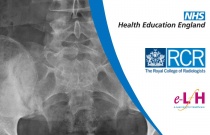Supporting Self-Management in Asthma in Children
Viv Marsh
0.50 Hours
This session introduces the concept of agreed self-management for children with asthma and explores the role of Health Care Professionals (HCPs) in supporting children and their families by educating them and working with them to develop Personalised Asthma Action Plans (PAAPs).
Twisted Ankle - Radiology
Adrian Mizzi
0.75 Hours
This session will help you to understand the basic mechanisms of ankle injuries and the predictable, mechanism-related patterns of osseous and ligamentous injuries. It will also help you to identify these injuries on plain films.
SIJ Pain and Injection - Radiology
Simon Porter
0.75 Hours
This session will help you accurately interpret the radiological investigations used to evaluate the sacroiliac joint (SIJ).
Step I: NSAIDS Drugs and Mechanisms, Side Effects and Contraindications
E Jack, J Wilson
0.50 Hours
Non-Steroidal Anti-Inflammatory Drugs (NSAIDs) are commonly prescribed to relieve acute and postoperative pain. It is therefore important to understand the mechanism of their action, side effects and complications of administration.
Ultrasound for Regional Anaesthesia
Claire Blandford
This session describes the underlying physics of ultrasound, covers key terminology pertinent to the use of ultrasound in regional anaesthesia and makes recommendations for optimizing images.
Trauma 2: Anaesthesia For Fractured Jaw
Andris Ievins
0.50 Hours
This session describes the principles behind anaesthesia for a fractured mandible. It will cover the anaesthetic assessment and management of such a case and provide a summary of the problems that may be encountered.
Skeletal Dysplasias
Amaka Offiah
0.50 Hours
This session provides an overview of the radiological diagnosis of skeletal dysplasias, concentrating on the following conditions - achondroplasia, thanatophoric dysplasia, mucopolysaccharidoses, multiple epiphyseal dysplasia, hereditary multiple exostoses and multiple enchondromatosis.
Small Bowel: Structural and Vascular Abnormalities of the Small Bowel
Bruce Fox
0.75 Hours
This session covers common structural abnormalities of the small bowel, including diverticula, malrotation and hernias. It discusses vascular abnormalities affecting the small intestine and common small bowel infections.
Staging Colorectal Cancer
Julian Elford
0.25 Hours
This session covers the radiological staging of colorectal cancer using a variety of imaging modalities.
STIs in the Pharynx and Oral-genital STI Transmission
Rona MacDonald and Laura Gillespie
0.50 Hours
This session covers the specialist investigation and management of sexually-transmitted oral and pharyngeal infections. Pathogenesis and oral transmission risks of key STI pathogens are discussed.
Caring: What and how we teach it workshop
Dr Suzette du Rand and Ms Terri Boyers
Teaching caring and even kindness is a necessity, because it can be delayed in people due to maltreatment early in life, or smothered under the weight of poverty, or derailed by victimization. Many people grow up in “parentless” homes and dire social settings where survival is paramount. On the other side of the spectrum, in wea....
Transforming Your Case Management Department Part I
Toni Cesta, Ph.D., RN, FAAN and Beverly Cunningham, MS, RN
When CMS instituted a linkage between cost and quality of healthcare, hospitals and healthcare systems required case management models to change and adapt to quality and cost-saving measures, like implementing value-based purchasing programs. Case managers now need to look at the designs of their case management models and staff....
Interventions in Behavioral Disturbances for Dementia and Alzheimer's Patients
Jennifer Walker RN, MSN
This course will provide participants with the skills to de-escalate situations with dementia and Alzheimer's patients.
Updates on Management of Lower Respiratory Tract Infections (LRTIs)
Dr. Andrew Owuor
Upper respiratory tract infections include the following: - Common Colds - Sinus infections - Tonsillitis - Laryngitis - Flu infections can affect both upper and lower respiratory tracts.
COVID 19 Series: Facing hard truths on the frontlines
Dr Rachel Clarke
The RSM COVID-19 Series is for health professionals, by health professionals; a series of talks dedicated to give healthcare workers on the frontline, regular and easy-to-access updates from healthcare leaders on COVID-19. Learn more about all our webinars here: https://rsm.ac/2UDvcsg Consider making a donation to the RSM:....
Virus-like particles and enterovirus antigen found in the brainstem neurons of Parkinson’s disease
Robert R. Dourmashkin,Sherman A. McCall,Neil Dourmashkin,Matthew J. Hannah
In a previous study on encephalitis lethargica, we identified a virus related to enterovirus in autopsy brain material. Transmission electron microscopy (TEM), immunohistochemistry (IHC) and molecular analysis were employed. Our present objective was to investigate, using a similar approach, as to whether virus-like particles (....
COURSE B - Org and Accreditor cert
Mr WCEA Administrator
0.50 Hours
This course should have a default certificate as the org and the accreditor certificate - if accreditation requirements are met.
COURSE A - educator certificate test
Mr WCEA Administrator
This course should show the cpd certificate and the live test 1 certificate
Home birth: setting up the basics
Sue Macdonald, Serena McLean
This course is about setting up the basics for home birth.
Reducing Restrictive Practice - Communication During Physical Restraint
Oluwatoni Idowu and David Keen
This session introduces the role of communication during physical restraint in reducing restrictive practice.
Introduction to Female Genital Mutilation (FGM)
Dan Reisel, and Sarah Creighton
This session aims to give a brief overview of female genital mutilation (FGM).
Causes and Risk Factors for Primary and Secondary Pneumothorax
Ahmed Fahim
This session revises the causes and risk factors for primary and secondary pneumothorax.
























